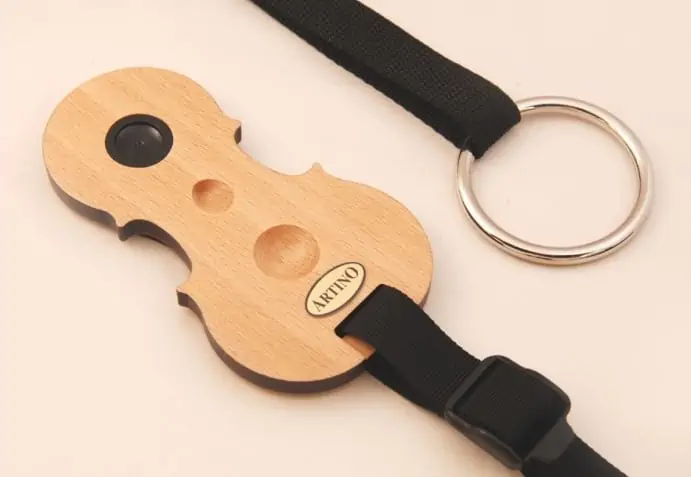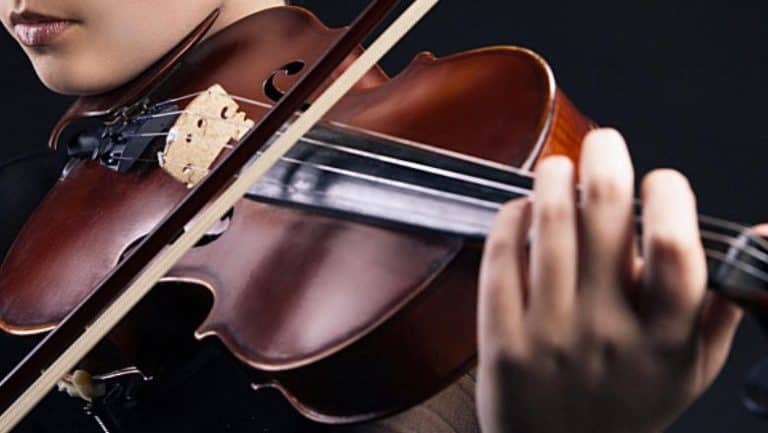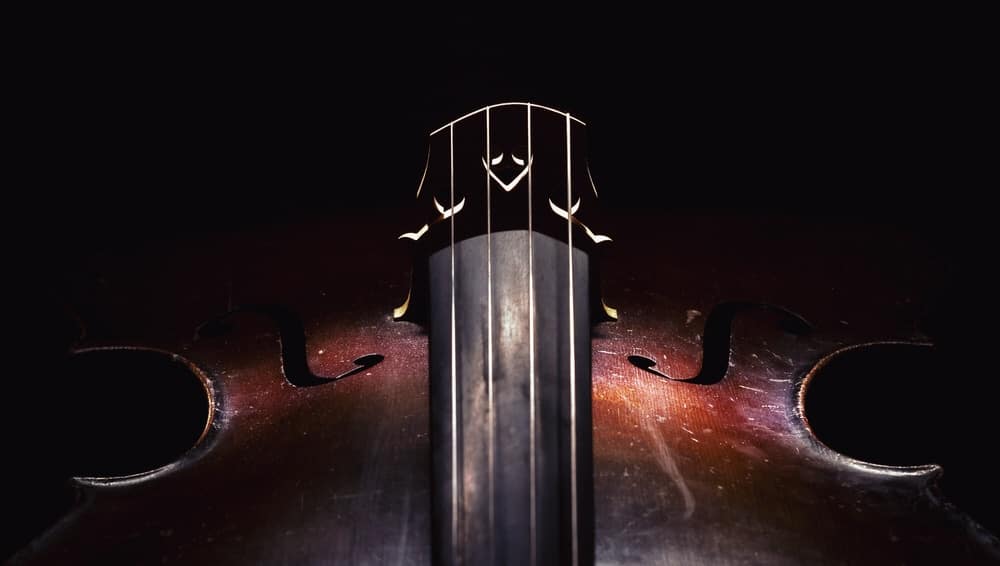Are you thinking about learning how to play cello or just curious about cello tips? You’re in the right place!
Imagine holding that elegant instrument, feeling its smooth curves, and making beautiful music with each bow stroke. The cello isn’t just about producing sound; it’s about feeling the music flow through you.
I’ll share the essentials to get you started, from positioning your hands and body to the first exercises you’ll need.
Are you excited to start playing the cello? Let’s begin your cello journey together!
Buy an end pin stopper!
There is nothing worse than your spike slipping during a performance. An easy way to prevent this, and also to protect the floor, is to get an end pin stopper. These come in many different styles. They have many names: end pin stopper, rock stop, spike holder etc – but they all serve the same purpose! The model I use is this…

Have a set of spare strings!
The other nightmare is a snapped string! This can happen quite easily, especially if the strings are old. Be prepared by always having a full set of strings in the pocket of your cello case.

COMES WITH: All 4 strings
FEATURES:
- Solid steel core
- Available for 1/2, 1/4, 1/8, 3/4, 4/4 sizes
D’ADDARIO
When you check the price above, you’ll see there are loads of great places to buy this item. Our personal favorite is Gear4music.
It is the largest music retailer in the UK and fast becoming the most respected online music shop in the US too. Their customer service is excellent, they have competitive prices, really fast shipping, and usually have the longest guarantee.
Most professional musicians use Gear4music, so there is no reason why you shouldn’t too!
- Trusted international brand
- Stay in tune for a long time
- Unaffected by temperature and humidity
- Smaller range of tonal colours compared with strings that are double the price
The professional musician who wrote this article combined many things,
from the product build, manufacturer’s reputation through to feedback
from other users, to create our famous TedScore™.
Don’t leave rosin lying around!
I remember once, placing my rosin on the floor next to my cello during an orchestra break and coming back to find it in pieces because someone had stepped on it! I have also left it on the music stand with my sheet music, only for it to fall off and smash! Lesson: if you’re not using it, put it back in your case! It’s a cello lesson that all cellists need to remember!

COMES WITH: It comes with a premium case
FEATURES:
-Uses the original recipe handed down from Ladislav Kaplan
-Low dust
D'Addario Kaplan
When you check the price above, you’ll see there are loads of great places to buy this item. Our personal favorite is Gear4music.
It is the largest music retailer in the UK and fast becoming the most respected online music shop in the US too. Their customer service is excellent, they have competitive prices, really fast shipping, and usually have the longest guarantee.
Most professional musicians use Gear4music, so there is no reason why you shouldn’t too!
- Amazing case
- Low Dust
- Is a pleasure to use
- None!
The professional musician who wrote this article combined many things,
from the product build, manufacturer’s reputation through to feedback
from other users, to create our famous TedScore™.
Do physical warm-ups!
In much the same way that an athlete will do some stretches and warming up before training, it is important that we also do a physical warm-up before we play cello. It can be a good idea to do some shoulder rotations, back lengthening exercises and even some hip circles. Staying in shape before practicing prevents pain further down the road.
Use a good chair
From knee height to the angle of the cello, so many things can be affected by the height and quality of the chair. Make sure that your chair is flat and allows your hips to be higher than your knees. Back support is not essential but can be helpful for long rehearsals. But the chair should definitely not have arms!
Have a plan!
As with any form of studying, a good plan produces good results. Decide what you are going to work on before you sit down to practice! Schedule in breaks and rewards; and if you find yourself losing concentration, just stop and come back to it later! Slow practice makes perfect!
Always have an aim with your cello lessons just like you do for your practice session!

Try some finger exercises
Playing an instrument requires the player to have control over each individual finger. This is not something that comes naturally to most people. To help with this, try some simple finger exercises.
Try cello playing with the fingers in a different order each time: 1234, 1243, 1324, 1342, 1424, 1434, 1323, etc etc. You can create these yourself or use a study book such as “Studies for Developing Agility for Cello” by Bernhard Cossman.
And remember to exercise your right hand as well – just because it’s holding a cello bow doesn’t mean you can forget about it!

Shifting exercises
A technique that is unique to string players is shifting. That is the moving between two notes that are far apart in pitch but also geographically across stringed instruments. As a cellist, you need to become comfortable with large shifts by practising sliding up and down the cello with different target notes at the top and the bottom. This can be fun to try at different speeds and can be helpful to imagine the fingerboard like a ski slope!
Slow practice can help with your shifting – your left hand needs to build its muscle memory, so the more time playing and working on your cello technique, the m
Open strings
Alongside your finger exercises and shifting fun, it is really helpful to just play some open strings when warming up. Focus on producing different types of sound: loud, quiet, mysterious, strong and experiment with different contact points, speeds of the cello bow, the weight of bow etc. This is also helpful to “wake up” the cello and get everything resonating fully before playing cello!
Stay organised
As you progress you will find that you have more pieces to practice, more basic scales to learn and hopefully more ensembles to play in! To keep on top of all of this – keep a practice diary. All cellists find this useful; it doesn’t matter if you’re a beginner or a pro! This can be as simple as a schedule or checklist, or as extensive as a daily evaluation of progress – whatever works for you!

Top 10 Tips To Playing The Cello
Summary
Do you want to share this infographic on your site? Use this code...
FAQ's
Any beginner can start to teach themselves to play the cello. However, if you want to become a professional cellist, you’ll need proper lessons from a professional cello teacher. Playing the cello is a wonderful, but complex task. There are so many elements to learning an instrument that doing it right from the start is our advice.
There are many tips we can give that make practicing the cello more effective. They include spending time on your bow hold, doing slow practice where you can listen to your intonation and tone, practice every note, one at a time, to perfect your muscle memory, and also remembering to have fun!
There are many ways to make your cello sound better. Practice is the obvious thing to say – but what should you practice? Well, the position of the bow makes a massive difference to the sounds you create. And for a beginner, don’t skimp on the quality of the bow or the strings that you use – it can make a massive difference to the overall quality of the sound.
To play cello step by step, you need a great teacher. Learning a musical instrument is a difficult task; and to give yourself the best shot at it, you should learn from an inspirational cello teacher.












never thought about the chair thing. might try that.
While I appreciate the advice on using a good chair, I believe it’s equally important to discuss posture. The right chair is a start, but without proper cello posture, one risks developing habits that could hinder their performance and cause injury over time.
Thanks for the insight, makes a lot of sense!
Absolutely, Max_TheMaestro. Proper posture is crucial. There’s substantial ergonomic research indicating the long-term benefits of correct posture, especially for cellists, to prevent strain and injury.
Love the focus on physical warm-ups! totally underrated but such a game changer. saved me from cramping up during long practice sessions.
Ellen Porter, got a question on those finger exercises. How long should I be doing them to see some progress? Just started learning cello.